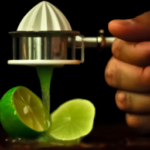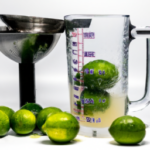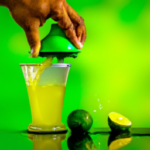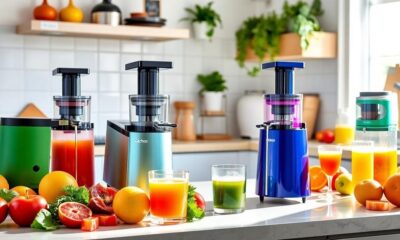Juice Tips and Tricks
How To Get More Juice Out Of A Lime

On this warm summer day, I find myself craving a cool glass of limeade.
But when I cut open my lime, I’m disappointed to find that it barely yields enough juice for one glass.
Frustrated, I start researching ways to extract the most juice out of my limes and discover some helpful tips and tricks.
Whether you’re making cocktails, marinades, or just adding a squeeze of lime to your water, getting the most out of your limes is essential.
Luckily, there are several techniques you can use to extract every last drop of juice from your limes.
In this article, I will share with you some of the best methods for getting more juice out of your limes, so you can enjoy that refreshing citrus flavor to the fullest.
Key Takeaways
- Choose heavy and fully ripe limes with thin, smooth skin for maximum juice yield
- Rolling, microwaving, and freezing limes can help break down membranes and release more juice
- Use a juicer or reamer for easy juice extraction, or try squeezing lime halves with all your might
- Proper storage techniques can maintain lime freshness and ripeness for up to 6 months
Choose the Right Limes
You gotta make sure you’re picking the juiciest limes possible to get the most out of your squeezing efforts! When it comes to choosing the best lime varieties for juicing, there are a few things to keep in mind.
Look for limes that are heavy for their size, as this indicates they are juicier. Additionally, choose limes that have thin, smooth skin, as they tend to yield more juice than their thicker-skinned counterparts.
Another important factor to consider is ripeness and juice yield. It’s best to choose limes that are fully ripe, as they will be the juiciest. You can tell if a lime is ripe by its color – a fully ripe lime will be bright green or yellow. Avoid limes that are too soft or have blemishes, as this may indicate that the lime is overripe and the juice yield will be lower.
By choosing the best lime varieties and ripe fruits, you’ll be optimizing your juice yield and making the most of your lime squeezing efforts.
When you’ve got your juicy limes picked out, it’s time to prep them for squeezing. A great trick to get even more juice out of your limes is to roll them before juicing. This helps to break down the membranes inside the fruit and release more juice.
With these tips in mind, you’ll be well on your way to getting the most juice out of your limes and enjoying all the delicious flavors they have to offer.
Roll the Limes Before Juicing
To extract every last drop of flavor from your lime, give it a good roll on the counter before squeezing it. Remember that a little elbow grease goes a long way. Rolling the lime helps to break down the cell walls, making it easier to release the juices.
This process is not just limited to limes but can also be applied to other citrus fruits such as lemons, oranges, and grapefruits, among others. Here are some benefits of rolling citrus fruits and different types of citrus fruits to roll before juicing:
-
Benefits of rolling citrus fruits:
-
It helps to release more juice from the fruit, making it easier to extract every last drop.
-
Rolling the fruit also helps to break down the membranes, resulting in a smoother and more flavorful juice.
-
It saves time and effort when squeezing the fruit, especially when dealing with large quantities.
-
Different types of citrus fruits to roll before juicing:
-
Limes: Rolling limes before juicing helps to soften their flesh, making it easier to extract their juices.
-
Lemons: Rolling lemons before juicing not only helps to release more juice but also helps to reduce the bitterness of the fruit.
-
Oranges: Rolling oranges before juicing helps to soften their membranes, making it easier to extract their juice.
By rolling your citrus fruits before juicing, you can extract more juice and get the most out of your fruits. But if rolling isn’t enough, you can also try microwaving them for a few seconds to make them even juicier.
Microwave the Limes
Microwaving citrus fruits is a quick and easy way to enhance their juiciness and flavor, providing a hassle-free option for those who want to extract the most from their fruits. When microwaving limes, the heat softens the fruit’s membranes, making it easier to extract the juice. This method also helps to break down the pectin, which increases the amount of juice that can be squeezed out.
The benefits of microwaving limes are plenty, but there are also common mistakes to avoid. Overheating the fruit can cause it to explode, making a mess in the microwave. To prevent this from happening, cut a small slit in the lime before microwaving it. Also, be sure to only microwave the lime for a short amount of time, 10-15 seconds should be enough.
Microwaving the limes is just the first step to getting the most out of your citrus fruits. The next step is to cut the limes in half to allow for easy juice extraction.
Cut the Limes in Half
Now that your limes are nice and warm, it’s time to slice them in half for easy accessibility to their flavorful juice. When it comes to cutting limes, there are different ways to position the halves depending on the type of knife you use.
For instance, if you’re using a paring knife, you can place the lime on its side and cut it in half lengthwise. This way, you can easily remove the seeds and squeeze out the juice. On the other hand, if you’re using a serrated knife, you can cut the lime in half crosswise, creating two circular halves. This method works best if you’re planning on using a reamer or juicer, as it provides a larger surface area for extracting the juice.
Regardless of the knife you use, make sure to apply even pressure when cutting through the lime to avoid losing any juice.
Now that you have your lime halves ready, it’s time to extract the juice. One way to do this is by using a juicer or reamer. By placing the lime half on the device and twisting it back and forth, the juice is extracted from the pulp. However, if you don’t have a juicer or reamer, you can still get the most out of your lime by using a fork or citrus squeezer to extract the juice.
Use a Juicer or Reamer
Using a juicer or reamer is the easiest way for you to extract all that delicious lime juice. Here are a few tips to help you get the most out of your lime using these alternative methods:
- Choose a juicer or reamer that best suits the size of your lime, so you can extract all the juice without any waste.
- Before juicing, roll the lime on a hard surface to break down the fibers and make it easier to extract the juice.
Clean your juicer or reamer thoroughly after each use with warm soapy water and a brush to scrub away any pulp or debris. Regular maintenance, such as sharpening the blades or replacing any worn parts, will help to ensure that it continues to work effectively.
Now that we’ve covered alternative methods for juicing limes, let’s move on to another option – using a fork or tongs to extract the juice.
Use a Fork or Tongs
By using a fork or tongs, you’ll be able to extract every bit of juice from your lime without the need for any specialized tools. These alternative tools are perfect for those who don’t have a juicer or reamer on hand, or for those who want to save time and effort.
To use a fork or tongs, simply cut your lime in half and grab a utensil of your choice. Place the lime half onto a flat surface and hold it steady with one hand. With the other hand, press the fork or tongs into the flesh of the lime and twist it back and forth. This will help to break up the pulp and release the juice.
The benefits of using a fork or tongs are that they’re readily available, easy to use, and can extract almost all of the juice from the lime. Plus, they’re easily cleaned and stored away when you’re finished.
Now that you’ve extracted all of the juice from your lime using a fork or tongs, it’s time to move onto the next step: microwaving the lime halves.
Microwave the Lime Halves
So, I’ve found that if I want to get even more juice out of a lime, microwaving the halves can be a game changer. By heating the lime halves, the juice becomes more fluid and easier to extract.
To do this, I recommend using a microwave-safe bowl and covering the lime halves with a microwave-safe lid or wrap. This method can be especially helpful when you’re in a time crunch or don’t have a citrus juicer on hand.
Heat the Halves for Additional Juice Extraction
To get even more juice out of your lime, try heating the halves in the microwave for a quick and easy way to loosen up the juice. There are several benefits of heating the lime halves before squeezing them. Firstly, heat helps break down the cell membranes in the fruit, making it easier to extract the juice. Secondly, heating the lime also makes it juicier and more pliable, allowing you to extract every last drop of juice.
When heating the lime halves, there are a few best practices to follow. First, make sure to cut the lime in half before placing it in the microwave. Then, heat the lime halves for about 10-15 seconds on high power. Be cautious not to overheat the lime, as this can lead to a bitter taste. Cover the lime halves with a paper towel or microwave-safe lid to prevent the juice from spraying all over the microwave.
Once heated, remove the lime halves from the microwave and squeeze them over a bowl or directly into your dish. With these simple tips, you can get the most juice out of your lime without any hassle.
Use a Microwave-Safe Bowl and Cover
When microwaving your lime, make sure to use a microwave-safe bowl and cover it with a lid or paper towel to create a cozy cocoon that will help your lime release its flavorful potential like a caterpillar emerging from its chrysalis. Using a microwave to extract juice from your lime is a quick and easy way to get the most juice out of your fruit without putting too much effort into it. The microwave’s heat softens the lime, making it easier to extract juice and also helps break down the lime’s cell walls, allowing the juice to flow out more easily.
There are different types of microwave-safe covers to choose from, such as plastic wrap, silicone lids, and even glass lids. Each cover has its benefits, but choosing the right one can make a significant difference in the outcome of your lime juice. For example, plastic wrap is great for creating a tight seal around your bowl, while silicone lids are reusable and can be easier to clean. Glass lids are also an option, but they can get hot and are more delicate. Ultimately, the choice of cover will depend on your personal preference and the type of bowl you are using. Now that you know how to properly microwave your lime, let’s move on to the next step: using a citrus press to get even more juice out of your fruit.
Use a Citrus Press
When it comes to getting the most juice out of a lime, using a citrus press is a game-changer. By pressing the lime halves, you can extract more juice than by simply squeezing them by hand.
There are two types of citrus presses available – manual and electric – and the choice between them depends on personal preference and frequency of use. As someone who frequently uses limes for cooking and cocktails, I highly recommend investing in a citrus press for maximum juice extraction.
Press the Lime Halves for Maximum Juice
Squeezing those lime halves with all your might will give you every last drop of delicious juice. However, you need to know the right hand squeezing techniques to get the maximum yield.
Start by rolling the lime on a hard surface to loosen up the flesh. Then, cut it in half lengthwise with a sharp knife. Hold the lime half with the cut side facing down over a glass or bowl.
Place your hand on top of the lime and press down, moving your hand in a circular motion. This will help to extract the juice from every corner of the lime.
If you want to make the process even easier, you can use lime juicing accessories. A handheld citrus reamer or juicer is a simple tool that can make a big difference. These devices have ridges or bumps on the bottom that help to break up the pulp and release the juice. Additionally, some handheld juicers come with strainers to catch any seeds, leaving you with smooth, pulp-free juice. Not only are they great for extracting citrus juices, but many people also find them useful for other small kitchen tasks, like helping to remove cherry juice stains from cutting boards or countertops. With the right tools, these tasks become much more manageable and less time-consuming.
Place the cut side of the lime half on the reamer or juicer, and twist it back and forth while applying pressure. This will help to extract as much juice as possible.
Now that you know how to squeeze lime halves for maximum juice, it’s time to choose a manual or electric press.
Choose a Manual or Electric Press
Opting for a manual or electric press is like choosing between a classic handwritten letter or a quick text message – both get the job done, but one requires more effort than the other. When it comes to getting more juice out of a lime, deciding on which type of press to use can make a big difference. Let’s take a look at the pros and cons of each option and compare their costs.
Manual presses, also known as citrus squeezers, require physical effort to extract juice from a lime. They are usually made of metal or plastic and are hand-held, making them portable and easy to use. On the other hand, electric presses are powered by electricity and can produce more juice with less effort. They also come in different sizes and shapes, making them suitable for different types of limes. However, they tend to be more expensive than manual presses, and some models may require more maintenance. Here’s a table that summarizes the pros and cons and cost comparison of both options:
| Press Type | Pros | Cons | Cost |
|---|---|---|---|
| Manual | Portable, easy to use, inexpensive | Requires physical effort, may not extract all juice | $5 – $20 |
| Electric | Can produce more juice with less effort, suitable for different types of limes | More expensive, may require more maintenance | $20 – $100+ |
Now that we’ve discussed the different types of presses and their pros and cons, let’s move on to another way to get more juice out of limes – freezing them.
Freeze the Limes
To get the most juice out of your limes, try freezing them before use. This technique is particularly useful for those who want to maximize the amount of juice they can get from their limes. Frozen lime benefits are numerous, as freezing them can help to break down their cell walls and release more juice.
This is because the water in the cells expands when frozen, causing the cell walls to rupture. When the lime thaws, the juice is more easily extracted due to the weakened cell walls. To freeze your limes, simply place them in a plastic bag and put them in the freezer. They can be frozen for up to 6 months, making it an effective lime preservation technique.
Once you’re ready to use the limes, thaw them out completely before cutting and juicing. By following this simple step, you’ll be able to extract more juice from your limes and enjoy their full flavor. To ensure that your limes stay fresh and flavorful for as long as possible, it’s important to store them properly.
Store the Limes Properly
Hey, lime lovers! Keep your limes fresh and zesty by storing them properly – just like you would a treasure in a chest. Proper storage techniques are essential for maintaining lime freshness and ripeness. Here are some tips on how to store your limes:
-
Keep your limes in a cool, dark place. Exposure to sunlight and heat can cause limes to ripen too quickly and lose their freshness.
-
Store your limes in a breathable container. Limes need air circulation to stay fresh, so avoid sealing them in an airtight container.
-
Separate your limes from other fruits and vegetables. Limes release a gas called ethylene, which can cause other produce to ripen and spoil faster.
-
Check your limes regularly for signs of spoilage. Look for soft spots, mold, or a bad smell. If you notice any of these signs, it’s time to use or discard your limes.
By following these proper storage techniques, you can ensure that your limes stay fresh and flavorful for longer. Incorporate these tips into your lime-loving routine and savor the zesty goodness of your limes for weeks to come!
Frequently Asked Questions
Can I use bottled lime juice instead of fresh lime juice?
I wouldn’t recommend using bottled lime juice instead of fresh. Fresh lime juice has benefits that bottled doesn’t, such as a brighter taste and more vitamin C. The taste difference is noticeable in cocktails, dressings, and marinades.
How can I tell if a lime is fresh and ripe?
To identify ripeness, I look for plumpness and smooth, bright skin. Avoid limes with brown spots or shriveled skin. Proper storage in a cool, dark place can extend the shelf life.
Can I use a blender instead of a juicer or reamer?
A blender can be used to extract juice from a lime, but a reamer or hand juicer may be more effective. Electric juicers are also an option. Consider the desired quantity and quality of juice when choosing a method.
How long can I store lime juice in the fridge?
To maximize the benefits of storing lime juice, it’s important to understand its shelf life. Fresh juice can be refrigerated for up to a week, but freezing options offer longer preservation. Proper storage maintains the juice’s quality.
What are some recipes that use a lot of lime juice?
I love using lime juice in recipes! Lime heavy cocktails like margaritas and mojitos are always a hit. Lime infused marinades are great for chicken and fish. Don’t forget about lime dressing for salads. Yum!
Conclusion
After trying all of these methods, I can confidently say that the key to getting more juice out of a lime is to choose the right limes, roll them before juicing, and use a juicer or reamer.
These methods consistently yielded the most juice with the least amount of effort. Additionally, microwaving the limes and using a citrus press can also be effective techniques for maximizing the amount of juice you can get from your limes.
Think of your lime as a precious gem that needs to be handled with care. By following these tips, you can unlock the true potential of your limes and extract every last drop of juice.
With a little practice, you’ll be able to impress your friends with your newfound ability to make the perfect margarita or add a zesty kick to your favorite dish.
So go forth and juice those limes like a pro!
Cindy thoroughly researches juicing trends, techniques, and recipes to provide readers with practical advice and inspiration. Her writing style is accessible, engaging, and designed to make complex concepts easy to understand. Cindy’s dedication to promoting the advantages of juicing shines through her work, empowering readers to make positive changes in their lives through the simple act of juicing.
Juice Tips and Tricks
How to Make Aloe Vera Juice Taste Better

Tired of the strong flavor of aloe vera juice? No problem, we’ve got the answer for you.
In this article, we’ll share some tips and tricks to make your aloe vera juice taste better. We have tried and tested various methods to enhance the flavor without compromising the health benefits.
From choosing the right juice to adding natural sweeteners and infusing with fruits and herbs, we’ve got all the information you need to transform your aloe vera juice into a delightful and refreshing beverage.
Let’s dive in!
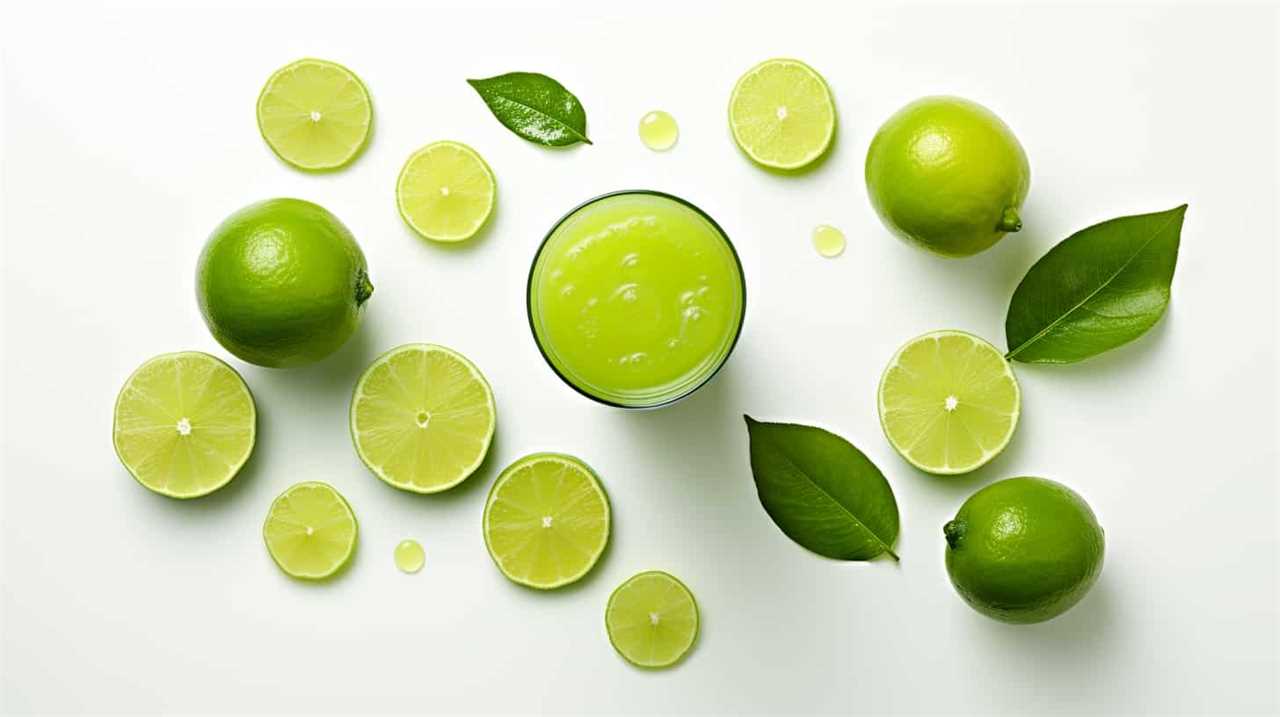
Key Takeaways
- Choose a reputable brand of aloe vera juice that prioritizes quality and uses organic, pure aloe vera.
- Avoid brands that contain added sugars or artificial ingredients.
- Use natural sweeteners like honey, agave syrup, or stevia to enhance the taste of aloe vera juice.
- Experiment with adding fruits, herbs, and other juices to create unique flavor combinations and enhance the health benefits of aloe vera juice.
Choosing the Right Aloe Vera Juice
We can enhance our experience with aloe vera juice by selecting the right brand and type for our preferences. When it comes to finding a reputable brand, it’s important to do some research and read reviews from other consumers. Look for brands that prioritize quality and use organic, pure aloe vera without any added sugars or artificial ingredients. Understanding the health benefits of aloe vera juice is also crucial in making the right choice. Aloe vera is known for its soothing properties, aiding digestion, promoting skin health, and boosting the immune system. By choosing a high-quality brand, we can ensure that we’re getting the maximum benefits from our aloe vera juice.
Now that we know how to choose the right brand, let’s move on to the next step of adding natural sweeteners.
Adding Natural Sweeteners
To enhance the flavor of our aloe vera juice, we can add natural sweeteners such as honey or agave syrup. Using alternative sweeteners not only adds sweetness but also brings unique flavors to the juice. Here are some options to consider:
- Stevia: A natural sweetener derived from the Stevia plant, it’s a zero-calorie alternative to sugar.
- Maple Syrup: This natural sweetener adds a rich and earthy flavor to the aloe vera juice.
- Dates: Pureed dates can be used to sweeten the juice while also providing essential nutrients like fiber.
In addition to using alternative sweeteners, we can enhance the flavor of aloe vera juice by adding spices and extracts. Cinnamon, ginger, or vanilla extract can add warmth and depth to the taste. By experimenting with different combinations of these natural sweeteners, spices, and extracts, we can create a flavor profile that suits our preferences.

Now, let’s move on to the next section and learn how to infuse aloe vera juice with fruits and herbs to further enhance its taste.
Infusing With Fruits and Herbs
As we explore ways to make our aloe vera juice taste better, one option to consider is infusing it with fruits and herbs. Creating unique aloe vera blends by adding fruits and herbs not only enhances the flavor but also adds a touch of freshness and complexity to the juice. For example, combining aloe vera juice with lemon, mint, or berries can create a refreshing drink that’s both delicious and packed with additional nutrients. It’s similar to the ease of making lemonade with bottled juice—quick, convenient, and customizable to suit your preferences. By experimenting with different fruit and herb combinations, you can elevate your aloe vera juice experience while still reaping its health benefits.
Fruits like strawberries, pineapple, or citrus can add a burst of sweetness, while herbs like mint, basil, or ginger can provide a subtle yet refreshing twist. Exploring the benefits of herbal infusions can also be beneficial for our health. For example, adding a few sprigs of lavender can promote relaxation and reduce stress. Additionally, infusing aloe vera juice with rosemary can aid digestion and boost the immune system.
Blending With Other Juices
Let’s try mixing aloe vera juice with different fruit juices to create delicious and refreshing blends. Blending aloe vera juice with other fruits not only enhances its taste but also adds nutritional benefits to your drink. Here are three fruit juices that you can mix with aloe vera juice:

- Orange juice: Combining aloe vera juice with orange juice not only adds a tangy flavor but also boosts your intake of vitamin C, which is essential for a strong immune system.
- Pineapple juice: Mixing aloe vera juice with pineapple juice creates a tropical blend that isn’t only refreshing but also helps in digestion. Pineapple contains bromelain, an enzyme that aids in breaking down proteins and promoting better digestion.
- Watermelon juice: Blending aloe vera juice with watermelon juice creates a hydrating and refreshing combination. Watermelon is rich in water content and contains electrolytes that can help replenish your body’s fluids.
Experimenting With Flavor Combinations
While we can try various flavor combinations with aloe vera juice, it’s important to find the right balance to enhance its taste. Experimenting with different flavors can’t only make the juice more enjoyable but also enhance its health benefits.
Aloe vera juice is known for its numerous health benefits, such as boosting digestion, promoting hydration, and supporting the immune system. By adding complementary flavors, we can create a refreshing summer drink that not only tastes great but also provides a nutritional boost.
Some popular flavor combinations include mixing aloe vera juice with citrus fruits like lemon or orange, adding a splash of coconut water for a tropical twist, or combining it with cucumber and mint for a refreshing and cooling effect.
Don’t be afraid to get creative and find the flavor combination that suits your taste buds best!
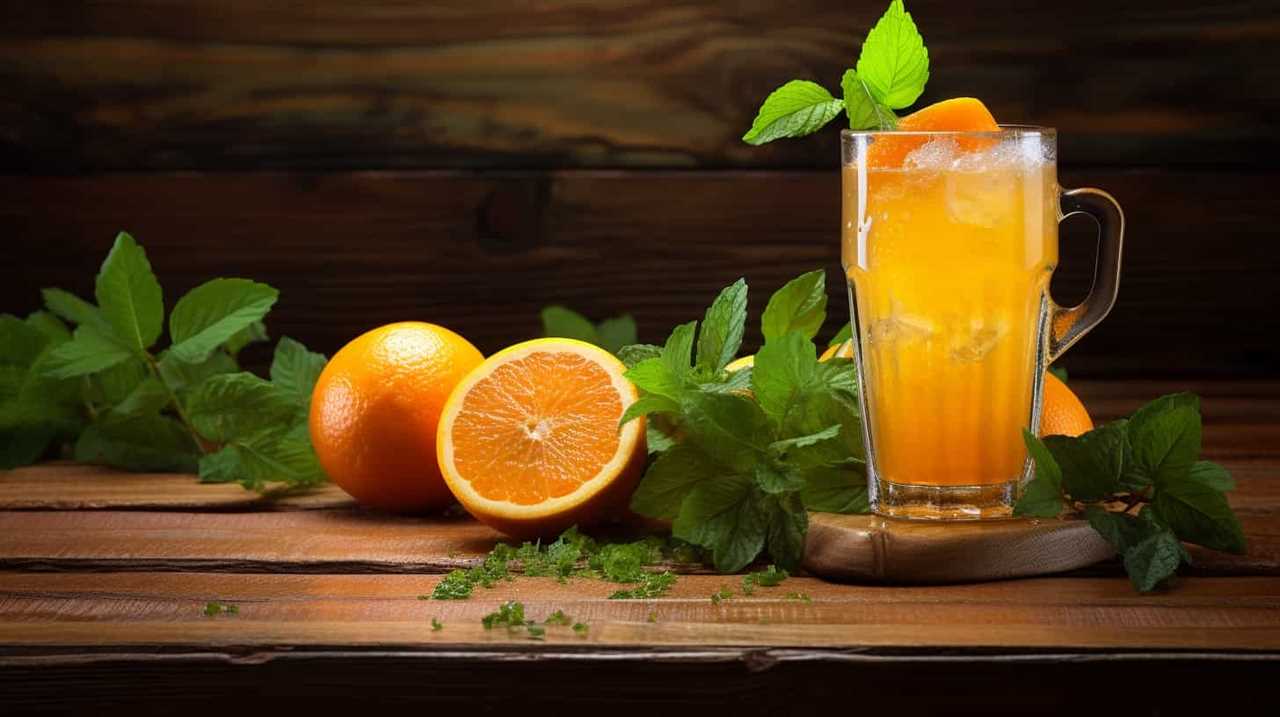
Frequently Asked Questions
Can I Use Store-Bought Aloe Vera Gel Instead of Fresh Aloe Vera for Making Juice?
Yes, you can use store-bought aloe vera gel instead of fresh aloe vera for making juice. However, it’s important to note that fresh aloe vera juice may have more health benefits due to its higher nutrient content.
How Long Can I Store Aloe Vera Juice in the Refrigerator?
Aloe vera juice can be stored in the refrigerator for up to a week. Refrigeration helps maintain the longevity and freshness of the juice, preserving its beneficial properties. It’s important to store the juice in an airtight container to prevent contamination and maintain its quality. Similarly, you might wonder *how long ginger juice lasts*; typically, fresh ginger juice can be refrigerated for about 1–2 weeks as well. Both aloe vera and ginger juices are best consumed within their shelf life to ensure maximum potency and health benefits. Additionally, freezing either juice can extend their shelf life, though some loss of nutrients and potency may occur during the process. When thinking about *how long fresh juice lasts*, it’s crucial to check for signs of spoilage, such as changes in smell, taste, or color, before consuming. To enjoy the best results, it’s always recommended to use fresh ingredients and properly store the juice to ensure you’re getting the most out of its health benefits.
Can Aloe Vera Juice Help With Digestive Issues?
Aloe vera juice can potentially help with digestive issues when taken in appropriate dosages. However, it is important to note that there may be potential side effects. It is always best to consult with a healthcare professional before starting any new supplement regimen.
Can I Use Artificial Sweeteners Instead of Natural Sweeteners in My Aloe Vera Juice?
Using artificial sweeteners in aloe vera juice may affect its taste and potential health benefits. However, natural sweeteners like honey or stevia can enhance the flavor without compromising its nutritional value.

Is It Safe to Drink Aloe Vera Juice Every Day?
Drinking aloe vera juice daily can have numerous benefits, such as improving digestion and boosting the immune system. However, consuming it regularly may also lead to potential side effects like diarrhea or stomach cramps.
Conclusion
In conclusion, making aloe vera juice taste better is easy and enjoyable.
By choosing the right aloe vera juice and adding natural sweeteners, infusing with fruits and herbs, blending with other juices, and experimenting with flavor combinations, you can create a delightful and refreshing drink.
So go ahead and unleash your creativity in the kitchen, and transform your aloe vera juice into a sensational elixir that will transport your taste buds to paradise.
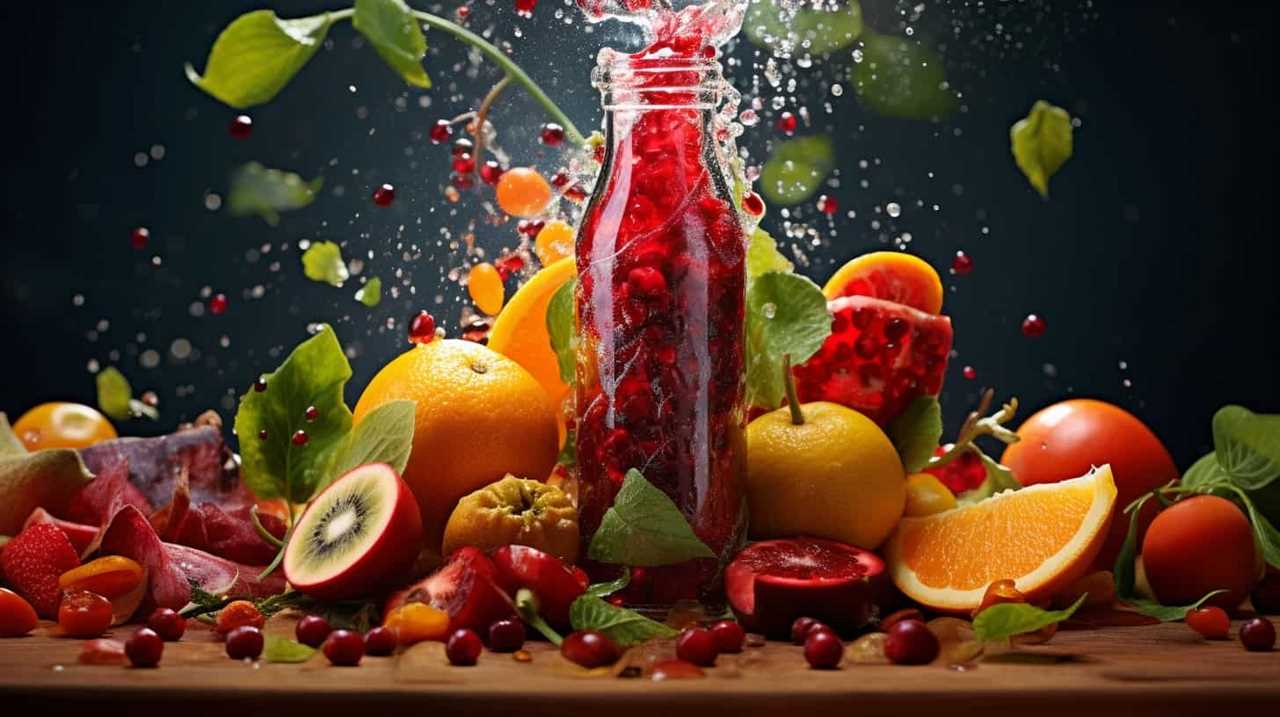
Susannah expertise lies in researching and compiling evidence-based content on juicing, nutrition, and overall health. She is committed to ensuring that The Juicery World offers accurate, up-to-date, and trustworthy information to empower readers to take control of their health. Susannah’s goal is to inspire individuals to embrace juicing as a way to nourish their bodies and live their best lives.
Juice Tips and Tricks
How to Make a Glass of Lemonade With Bottled Lemon Juice

Are you craving a cool glass of lemonade to quench your thirst? Look no further! Try out our perfect recipe using bottled lemon juice that will surely please your taste buds.
In this article, we’ll guide you through the process of creating a tangy and sweet concoction that will leave you feeling refreshed and satisfied.
So grab your ingredients and let’s get started on this delightful journey of serving ourselves and others a glass of pure lemony goodness.
Key Takeaways
- Consider the storage of the bottled lemon juice (dark glass or plastic bottles, protect from light exposure, check expiration date)
- Choose a suitable pitcher and fresh lemons for enhanced flavor
- Store the lemonade concentrate in the refrigerator to maintain freshness
- Adjust the sweetness and tartness to taste with sugar or more lemon juice, and experiment with different sweeteners or additional flavors.
Choosing the Right Bottled Lemon Juice
What are the key factors we should consider when selecting the right bottled lemon juice for our lemonade?

One important factor is how the lemon juice is stored. Look for bottles that are made of dark glass or plastic, as they help protect the juice from light exposure, which can degrade its quality. It’s also important to check the expiration date to ensure freshness.
Another benefit of using bottled lemon juice is convenience. It saves time and effort compared to squeezing fresh lemons. Additionally, bottled lemon juice provides consistent flavor, as the acidity levels are standardized.
When selecting a brand, consider reading reviews and checking for certifications, such as organic or non-GMO.
Gathering the Necessary Ingredients and Tools
How can we gather all the necessary ingredients and tools to make a glass of lemonade with bottled lemon juice? First, we’ll need to collect bottled lemon juice, sugar, and cold water, as well as a pitcher and a spoon for mixing. If you prefer extra flavor, you can also gather ice and optional add-ins like mint or soda water. While preparing the lemonade, it’s easy to understand why some people wonder about other citrus drinks and may ask, “how many oranges per gallon” are needed when making orange juice instead. Once everything is assembled, combine the lemon juice, sugar, and water in the pitcher, stirring until the sugar dissolves. Feel free to adjust the sweetness or tartness to your liking, and don’t forget to add ice or any optional add-ins for an extra refreshing touch. This process might even make you curious about how much juice from oranges is needed when making fresh orange juice compared to using bottled citrus products. Once your lemonade is ready, pour it into a glass and enjoy the refreshing taste. This simple recipe can inspire you to try other homemade juices, such as learning **how to make pear juice** or experimenting with other fruit combinations. Whether you’re using fresh fruits or bottled options, creating your own beverages is a fun and rewarding way to personalize your drinks.
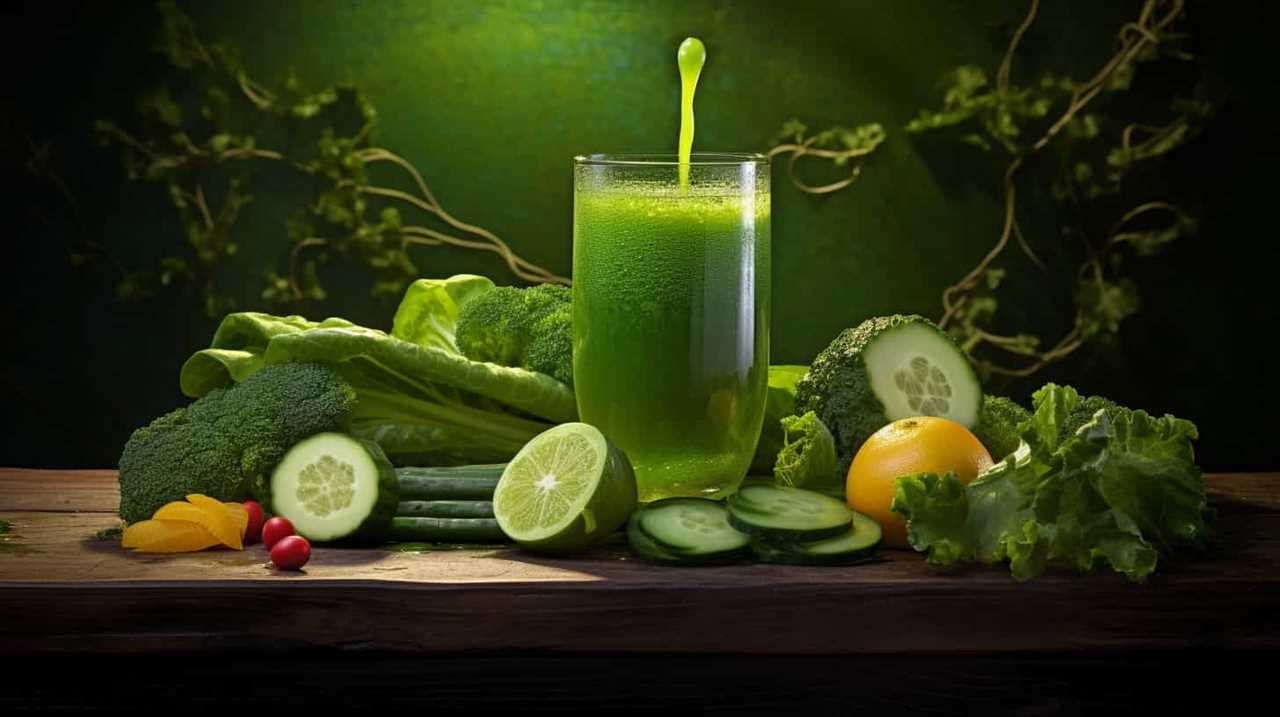
It’s important to start with the right pitcher. Look for a pitcher that’s made of glass or BPA-free plastic, as these materials won’t affect the taste of the lemonade. The pitcher should also have a lid or cover to keep the lemonade fresh and prevent spills.
Now, let’s talk about the lemons. While bottled lemon juice is convenient, using fresh lemons instead can elevate the flavor of your lemonade. Choose lemons that are firm and have a bright yellow color. Give them a gentle squeeze to ensure they’re juicy. To extract the juice, you’ll need a citrus juicer or a reamer. These tools make it easy to get every last drop of juice from the lemons.
Mixing the Lemonade Concentrate
To start mixing the lemonade concentrate, we’ll slowly pour the bottled lemon juice into the pitcher. It’s important to choose the right container for the lemonade concentrate. A pitcher with a lid or a tightly sealed container will help maintain the freshness and prevent any spills or leaks. Once the lemon juice is in the pitcher, we can move on to the next step of adding water and sweetener.
To ensure the lemonade concentrate stays fresh, it’s essential to store it properly. Keep the pitcher in the refrigerator to maintain its cool temperature and prevent any bacteria growth. If you have any leftover concentrate, transfer it to a smaller container with an airtight lid before refrigerating. This will help retain its flavor and prevent any contamination.

Now that we’ve mixed the lemonade concentrate, it’s time to adjust the sweetness and tartness to taste.
Adjusting the Sweetness and Tartness to Taste
We can adjust the sweetness and tartness of the lemonade to taste by adding more sugar or lemon juice, respectively. If you prefer a sweeter lemonade, simply add more sugar and stir until it dissolves completely. You can experiment with different sweeteners such as honey or agave syrup to find the perfect balance of sweetness.
On the other hand, if you want a tangier lemonade, add more lemon juice gradually, tasting as you go until it reaches your desired level of tartness.
Additionally, you can get creative with your lemonade by adding flavors like fresh mint leaves or a hint of lavender. These additions can elevate the flavor profile and create a more refreshing and unique experience.

Now that we’ve adjusted the sweetness and tartness of our lemonade, let’s move on to serving and enjoying your refreshing glass of lemonade.
Serving and Enjoying Your Refreshing Glass of Lemonade
Now let’s sit back, relax, and savor our refreshing glass of lemonade.
When it comes to serving and enjoying this delightful drink, there are a few techniques and garnishing options to consider.
Firstly, serving your lemonade chilled is essential for maximum enjoyment. Ensure that you have chilled glasses or add ice cubes to the glasses before pouring the lemonade.

To add a touch of elegance, you can garnish your lemonade with a slice of lemon on the rim of the glass. For an extra burst of flavor, you could also add a sprig of fresh mint or a few berries.
Remember to gently stir the lemonade before serving to evenly distribute the flavors.
Now, take a sip, feel the refreshing tang of lemon, and let the sweet and tart flavors dance on your taste buds.
Cheers!

Frequently Asked Questions
Can I Use Fresh Lemons Instead of Bottled Lemon Juice?
Fresh lemons offer numerous benefits over bottled lemon juice. The taste of fresh lemons is unparalleled, providing a vibrant and tangy flavor. Incorporating fresh lemons into your lemonade will elevate its taste and give it a refreshing and authentic twist.
Can I Substitute Sugar With a Different Sweetener?
Substituting sweeteners in lemonade can enhance the flavor and offer health benefits. We’re knowledgeable about alternative sweeteners and can provide precise, detailed instructions on using them in place of sugar.
How Long Does the Lemonade Concentrate Need to Chill in the Refrigerator?
The chilling time for the lemonade concentrate in the refrigerator is typically around 1-2 hours. Using bottled lemon juice offers the benefit of convenience and consistent flavor for a refreshing glass of lemonade.
Can I Add Other Fruits or Flavors to the Lemonade?
Sure, we can definitely add different fruits or flavors to our lemonade. It’s a great way to experiment with unique flavors and create refreshing, personalized drinks. The possibilities are endless!

How Long Does the Lemonade Stay Fresh in the Refrigerator?
Lemonade made with bottled lemon juice can stay fresh in the refrigerator for about 5-7 days. To maximize shelf life, store it in an airtight container and keep it chilled.
Conclusion
And so, with a few simple steps and the right ingredients, a glass of refreshing lemonade is born.
Like a symphony of flavors dancing on your taste buds, this tangy elixir quenches thirst and brings joy on a hot summer day.
Just a sip transports you to a world of citrusy delight, where the sweetness and tartness blend harmoniously.

So go ahead, indulge in the art of lemonade-making and savor every drop of this sun-kissed nectar.
Cheers to the perfect glass of lemonade!
Susannah expertise lies in researching and compiling evidence-based content on juicing, nutrition, and overall health. She is committed to ensuring that The Juicery World offers accurate, up-to-date, and trustworthy information to empower readers to take control of their health. Susannah’s goal is to inspire individuals to embrace juicing as a way to nourish their bodies and live their best lives.
Juice Tips and Tricks
How to Know if Orange Juice Is Bad

We’ve all been in that situation before – reaching for a glass of orange juice and hesitating, unsure if it’s still okay to drink. Fear not! This article will give you the knowledge you need to determine for sure if your orange juice is still fresh or if it’s gone bad.
With a blend of scientific precision and practical tips, we’ll explore color changes, strange smells, off taste, texture changes, and mold or growth that may indicate spoilage.
Let’s dive in and serve ourselves a refreshing glass of certainty!
Key Takeaways
- Color changes in orange juice can indicate a loss of freshness and shelf life extension, but it doesn’t necessarily mean the juice is bad.
- Unusual or off-putting odors in orange juice, such as sour or fermented scents, can be a sign of poor quality.
- An off taste in orange juice, such as sour, bitter, or fermented flavors, suggests that the juice is spoiled.
- Texture changes in orange juice, such as pulp separation or a thicker consistency, can occur as the juice ages, so it’s important to consume it before the expiration date.
Color Changes in Orange Juice
We should be aware that color changes can indicate whether orange juice is bad.

When it comes to orange juice, color is a crucial factor to consider. As oranges are exposed to air, an oxidation process occurs, which leads to changes in color. Fresh orange juice has a vibrant orange hue, indicating its freshness and high nutritional value.
However, as time passes, the juice may undergo a color change, turning dull or brownish. This change in color is a result of the oxidation process, which affects the flavor and quality of the juice. It’s important to note that while a change in color doesn’t necessarily mean the juice is bad, it does indicate that the juice is losing its freshness and shelf life extension.
Therefore, it’s advisable to consume orange juice when it’s at its freshest, as indicated by its vibrant orange color.
Strange Smells in Orange Juice
When it comes to evaluating orange juice, we should be cautious of any strange smells or odors. A fresh, pleasant smell is indicative of good quality orange juice. However, if you notice any unusual or off-putting odors, it may be a sign that the juice has gone bad. These smells can range from a sour or fermented scent to a rancid or moldy aroma.

It’s important to note that while some natural variations in scent can occur due to the specific variety of oranges used, any strong or unpleasant smells should raise concerns. If you have citrus fruit allergies, it’s especially important to pay attention to the smell of orange juice, as it could indicate the presence of spoilage or contamination.
Ensuring the quality of orange juice is essential as it’s a popular beverage known for its health benefits, including being rich in vitamin C and antioxidants.
Off Taste of Orange Juice
Our taste buds can detect even the slightest hint of an off taste in orange juice, which can indicate that it has gone bad. The taste of orange juice should be fresh, tangy, and slightly sweet. If it tastes sour, bitter, or fermented, it’s likely spoiled.
One common cause of an off taste in orange juice is the use of overripe oranges. When oranges become overripe, their flavor profile changes, resulting in a less pleasant taste. Another factor to consider is the expiration date. Orange juice that has passed its expiration date is more likely to develop an off taste. It’s important to check the expiration date before consuming orange juice to ensure its freshness and quality. Additionally, improper storage conditions, such as leaving the juice at room temperature for extended periods, can lead to the development of unpleasant flavors. Storing orange juice in the refrigerator helps maintain its freshness for longer. For those exploring different juice options, aloe vera juice flavor tips suggest pairing tart juices with milder flavors to balance the overall taste.
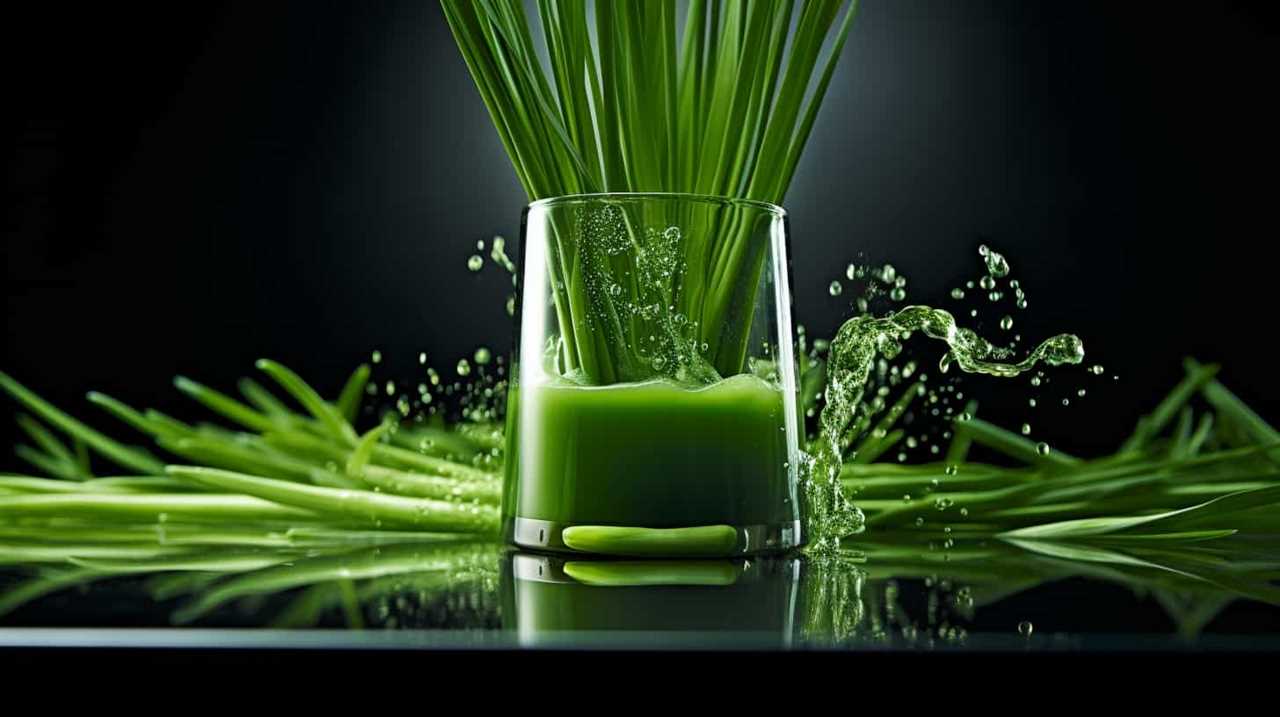
Now, let’s move on to discuss the texture changes in orange juice.
Texture Changes in Orange Juice
As we explore the texture changes in orange juice, it’s important to note that certain factors can cause it to become thicker or develop sediment. One common texture change in orange juice is pulp separation, where the pulp separates from the liquid and settles at the bottom. This can occur naturally over time, as the pulp particles become denser and sink.
Another factor that can affect the texture of orange juice is the expiration date. As orange juice ages, it may start to develop a thicker consistency and even form sediment. This is a result of the natural breakdown of the juice’s components. Therefore, it’s crucial to check the expiration date on orange juice and consume it before it reaches its expiration date to avoid any undesirable texture changes.
Mold or Growth in Orange Juice
We need to be aware of the possibility of mold or other growth occurring in orange juice. Mold can develop in orange juice if it isn’t stored properly or if it has passed its expiration date.

To prevent mold growth, it’s important to follow these steps:
- Store orange juice in the refrigerator at a temperature below 40°F (4°C).
- Check the expiration date on the bottle before consuming. Discard any orange juice that has expired.
- Keep the container tightly sealed to prevent air and moisture from entering, as these can promote mold growth.
Regularly inspecting orange juice for any signs of mold or unusual growth is essential. If you notice any discoloration, a strange odor, or visible mold, it’s best to discard the juice to avoid any potential health risks.
Frequently Asked Questions
Can Orange Juice Go Bad if It’s Stored in the Freezer for Too Long?
Frozen orange juice can potentially lose its nutrients and change its taste if stored in the freezer for too long. It is important to check for signs of spoilage before consuming it.
How Long Can Orange Juice Stay Fresh in the Refrigerator Once It’s Opened?
Once opened, orange juice can stay fresh in the refrigerator for about 7-10 days. To maintain its freshness, store it properly by keeping it tightly sealed and at a consistently cold temperature. If the orange juice develops an off odor, flavor, or appearance, it’s best to discard it to avoid any potential health risks. Factors like exposure to air and varying temperatures can influence how long orange juice lasts, so it’s crucial to handle it with care. Always check the expiration date as a general guide, but remember that proper storage can extend its freshness slightly. Additionally, avoid leaving the orange juice out at room temperature for extended periods, as this can significantly shorten how long orange juice lasts. Freezing the juice can be another option to extend its shelf life, but be aware that this may alter its texture and taste once thawed. By following these precautions, you can ensure your orange juice stays fresh and safe to consume.
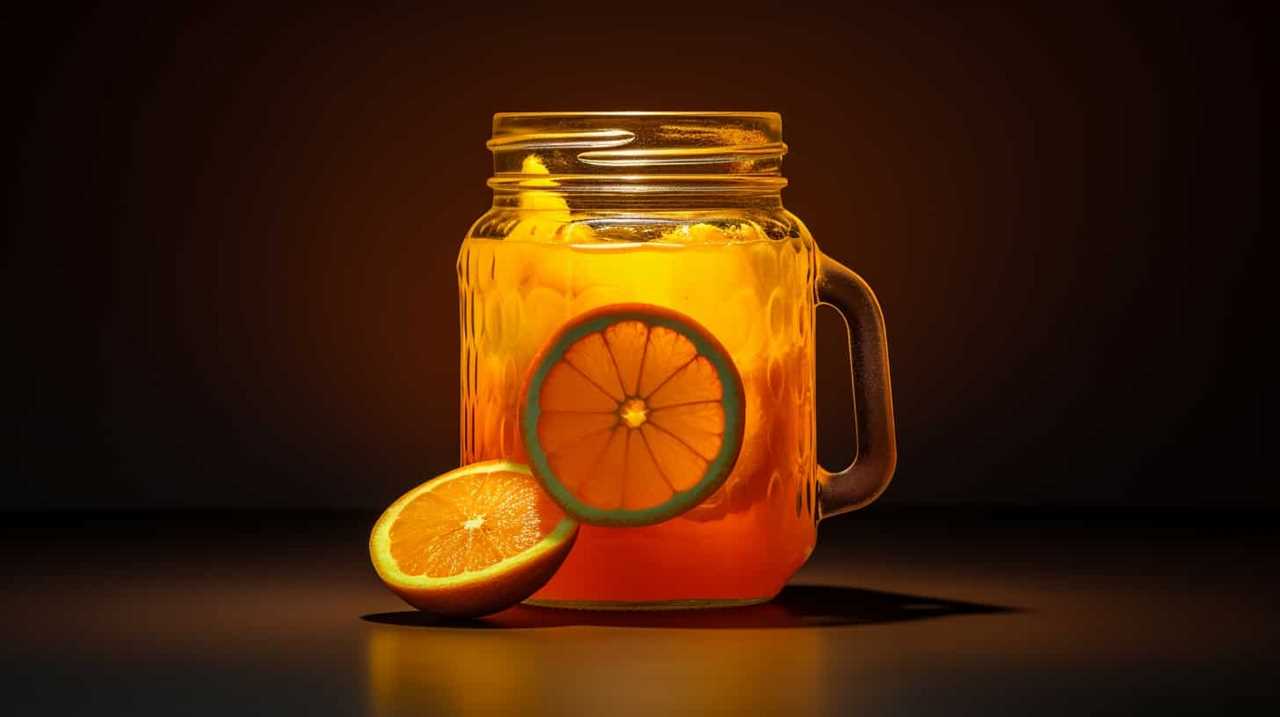
Is It Safe to Consume Orange Juice That Has Been Left Out at Room Temperature Overnight?
Left out orange juice may not be safe to drink as it can harbor harmful bacteria. Signs of spoiled orange juice include a sour smell, mold growth, and a change in color or taste.
Can Orange Juice Develop Harmful Bacteria if It’s Past Its Expiration Date but Still Looks and Smells Fine?
Orange juice can cause food poisoning if it develops harmful bacteria, even if it looks and smells fine. Signs of spoiled orange juice include a sour smell, mold growth, and a change in color or taste.
Does the Nutritional Value of Orange Juice Decrease as It Starts to Go Bad?
As orange juice goes bad, its nutritional value decreases. The longer it sits on the shelf, the more nutrients it loses. Signs of spoilage include a sour smell, off taste, and mold growth.
Conclusion
In conclusion, determining if orange juice is bad requires careful observation of color changes, strange smells, off taste, and texture changes. Just like a detective investigating a case, we must rely on our senses to detect any signs of spoilage.
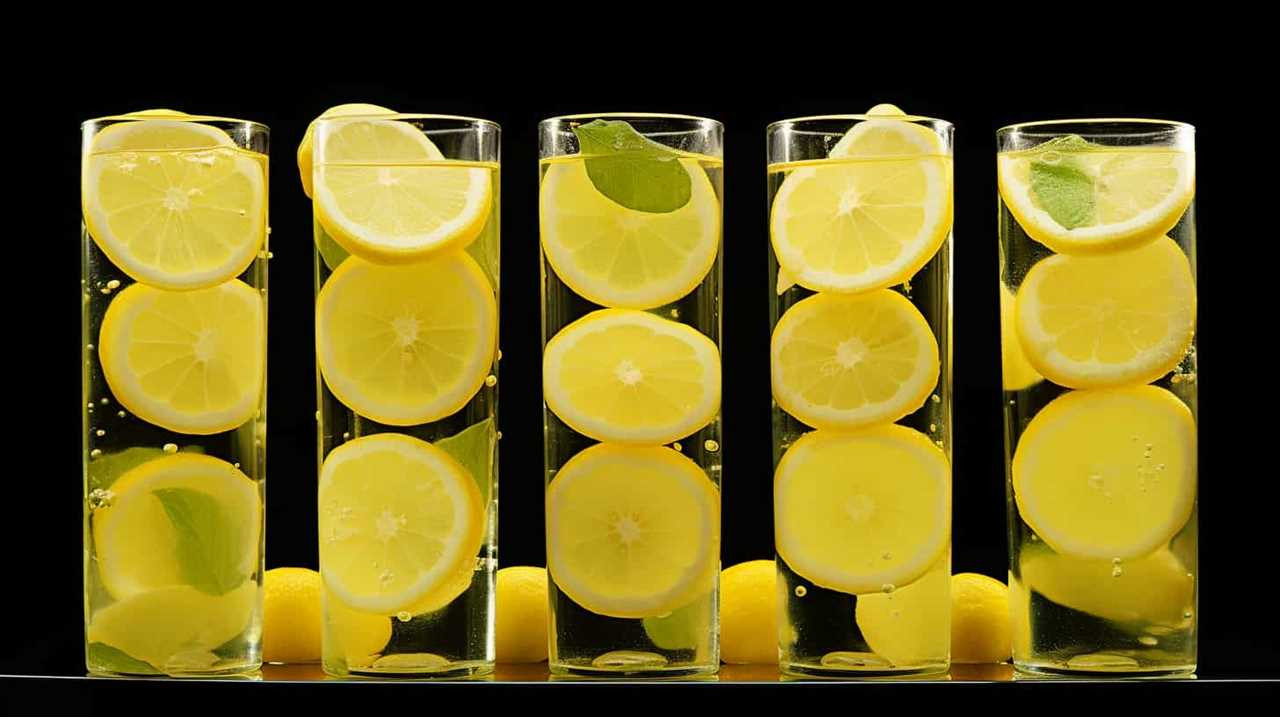
If we detect mold or growth in the orange juice, it’s a clear indication that it’s no longer safe to consume. By remaining vigilant and attuned to these indicators, we can ensure that our orange juice is always fresh and enjoyable.
Susannah expertise lies in researching and compiling evidence-based content on juicing, nutrition, and overall health. She is committed to ensuring that The Juicery World offers accurate, up-to-date, and trustworthy information to empower readers to take control of their health. Susannah’s goal is to inspire individuals to embrace juicing as a way to nourish their bodies and live their best lives.
-

 Vetted2 months ago
Vetted2 months ago15 Best Juices for Diabetics: Refreshing Options That Won’t Spike Your Blood Sugar
-

 Vetted2 months ago
Vetted2 months ago15 Best Decaf Coffee Options for Flavor Lovers Who Need a Caffeine Break
-

 Vetted2 months ago
Vetted2 months ago15 Best Espresso Ground Coffees to Elevate Your Morning Brew
-

 Vetted2 months ago
Vetted2 months ago15 Best K-Cup Coffee Pods for a Perfect Brew Every Time
-

 Vetted2 months ago
Vetted2 months ago15 Best Beans for Espresso: A Guide to Perfecting Your Brew
-

 Vetted2 months ago
Vetted2 months ago15 Best Kona Coffees to Savor the Rich Flavors of Hawaii
-

 Vetted2 months ago
Vetted2 months ago15 Best Inexpensive Espresso Machines That Brew Quality Coffee on a Budget
-

 Vetted2 months ago
Vetted2 months ago15 Best Cold Brew Coffees to Keep You Refreshed All Summer Long





